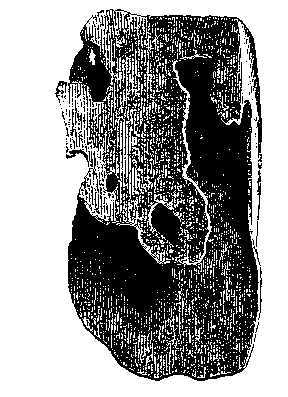Chapter 7: Cunga Fheichín (Cong)
- Cong Village
- Annals of Cong
- Cong Abbey
- Cross of Cong
- Black Bell of Saint Patrick
- Monuments
- Caves
Return to table of contents
Refer to Map

The fourth and last relique connected with this locality was the
Black Bell of St. Patrick, which the author procured many years ago
for the Academy, and of which an illustration is given overleaf. It
had long been in the possession of the Gerarty family, near
Ballinrobe, who brought it every year to the "pattern" held on the
top of the Reek or Cruach Phádraic, on "Garland Sunday," and where,
in the little oratory there, the pious pilgrim was allowed to kiss it
for a penny; and, if he had been affected by "rheumatism pains," he
might put it three times round his body for two pence. But times got
bad, the pattern thinned, and the Maor or keeper of the Clog dubh
sold it, to help to pay his passage to
America. Certainly, if wear and tear is a sign of age, this antique
should claim our highest veneration. It is